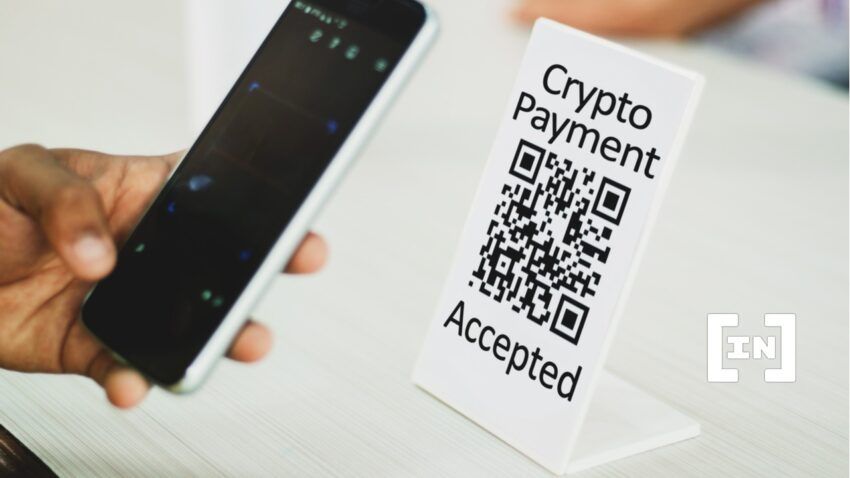Why this is a Revolution for Both Buyers and Merchants
Web3 Shopping: The switch from payment cards to cryptocurrencies and the era of Web3 shopping is already happening, says Kurt Ivy. Here’s why that’s good for both shoppers and merchants.
2021 was the year when crypto and blockchain technology went mainstream for the first time in its history. This was largely due to the rise in popularity of non-fungible tokens (NFTs) and the concept of Web3.
The past decade of growth of the internet has been dominated by the age of social media (also known as Web 2.0). But there has been a recent push to revolutionize the internet once again. This is by giving users more control over their data. And, by exploiting the power of various blockchain networks that enable new types of functionality and economic models on the web.
Web3 has been touted as a completely new way to think about how web users can interact with each other online. Its proponents claim it will be able to fix many key issues found with everything from social media to online shopping.
What is Web3?
For now, Web3 is more of a buzzword than anything else. It is still difficult for some of the technology’s loudest proponents to clearly explain exactly how this new age of the internet will manifest itself in the coming years.
That said, there are some common areas of focus found in basically every description of Web3. The basic idea with Web3 is to apply blockchain technology and other building blocks related to cryptography. This is to create a new structural base for web apps focused around decentralization.
In many ways, Web3 is a reaction to the high degree of control that big tech companies, such as Facebook and Google, have over their users and the internet as a whole.

Web3 Shopping: Starting up
The portal into Web3 apps for users will likely be some sort of crypto wallet. This wallet allows users to do everything from making payments to logging into web apps with some sort of decentralized, digital identity. These wallets hold the private keys associated with users’ digital assets, online identities, certifications, and possibly much more.
Today, the most popular wallet comes in the form of MetaMask, which is an Ethereum wallet. It can also be compatible with other crypto networks that use the Ethereum Virtual Machine (EVM).
Today, this sort of crypto wallet is mainly used for logging into Ethereum-based apps focused around decentralized finance (DeFi) or NFTs. However, many technologists see this model for interacting with web apps eventually branching out to all other areas of the web as well.
Although the average person likely still finds these sorts of crypto wallets a bit too cumbersome to use right now, the hope is that ease-of-use will dramatically improve over time.
What Can Web3 Enable for Online Shopping?
One of the areas of Web3 that has caught the attention of blockchain enthusiasts is online shopping and ecommerce. Bitcoin itself started as a way to revolutionize online payments.
But the promise of Web3 has the potential to do much more than change the way people pay for goods and services online.
The good news is that once someone has a crypto wallet installed in their laptop’s browser or on their mobile phone, the Web3-enabled shopping experience will not feel that different from how shopping already works today. In fact, many Web3 apps can be seamlessly integrated into traditional online commerce platforms such as Shopify and WooCommerce. The switch from payment cards to cryptocurrencies and the era of Web3 shopping is already happening.
NFTs could also play a crucial role in the development of this space. NFTs are unique digital tokens that are held in users’ crypto wallets. They can represent a variety of real-world or digital items.

Web3 Shopping: NFTs
Let’s look at the SHOPX platform as an example here, as they offer a variety of different types of NFTs for merchants to provide to their customers.
ReserveX is an NFT-powered feature from SHOPX. It acts as a sort of ticketing or voucher system for new products that are sold on an online store. There is a common problem associated with presales or new products when they are sold online in a limited amount. Programmers will write bots to crawl the web and find new limited-edition products to buy as soon as they are made available.
The creator of the bot will then flip the new product on another platform for a profit. This means the real fans of the brand behind the product can ultimately be left paying a higher price than they otherwise would pay. This is simply because one or more persons were able to buy out the entire stock of the new product through the use of bots.
With ReserveX, brands are able to sell or give away digital vouchers related to drops of new merchandise. With this setup, there is a requirement for being able to participate in a presale or debut of a new product. That is, that the customer must have a ReserveX NFT to make the purchase. The hope here is to create a fairer system that rewards true fans of brands rather than merchandise poachers.
Web3 Shopping: eCommerce NFTS
Another type of e-commerce NFT enabled by SHOPX is MintX. This is a type of NFT that is a bit more well-known. This is where the NFT represents some sort of physical or digital good sold by the merchant. In other words, the customer receives an NFT associated with a product whenever they make a purchase via the merchant’s online store.
In some ways, this can be viewed as a sort of digital certificate of authenticity that the customer is then able to store in their crypto wallet. One could imagine a situation where a customer purchases some sort of exclusive new product. They can then easily and cryptographically prove ownership over that item to other people over the internet.
The NFT can also be transferred to someone else in a situation where the product is resold. This is helpful in preventing the prevalence of fake or knock-off versions of products from premium brands.

Web3 Shopping: A Changing World
Bitcoin payments were the beginning of massive changes that are coming to the world of e-commerce. Newer blockchains focused on NFTs and Web3 have the potential to enable a much higher degree of experimentation. Over the coming years, merchants should pay close attention to how they can use this new technology to improve brand loyalty, reduce fraud, and much more.
About the author

Kurt Ivy is a content writer for SHOPX and Gamerse, marketing advisor for Altar, head of content at Crypto PR Labs, and CEO of Coffee Nova. Ivy is a philosopher, futurist, writer, and entrepreneur.
Got something to say about Web3 shopping or anything else? Write to us or join the discussion in our Telegram channel. You can also catch us on Tik Tok, Facebook, or Twitter.
Disclaimer
All the information contained on our website is published in good faith and for general information purposes only. Any action the reader takes upon the information found on our website is strictly at their own risk.


